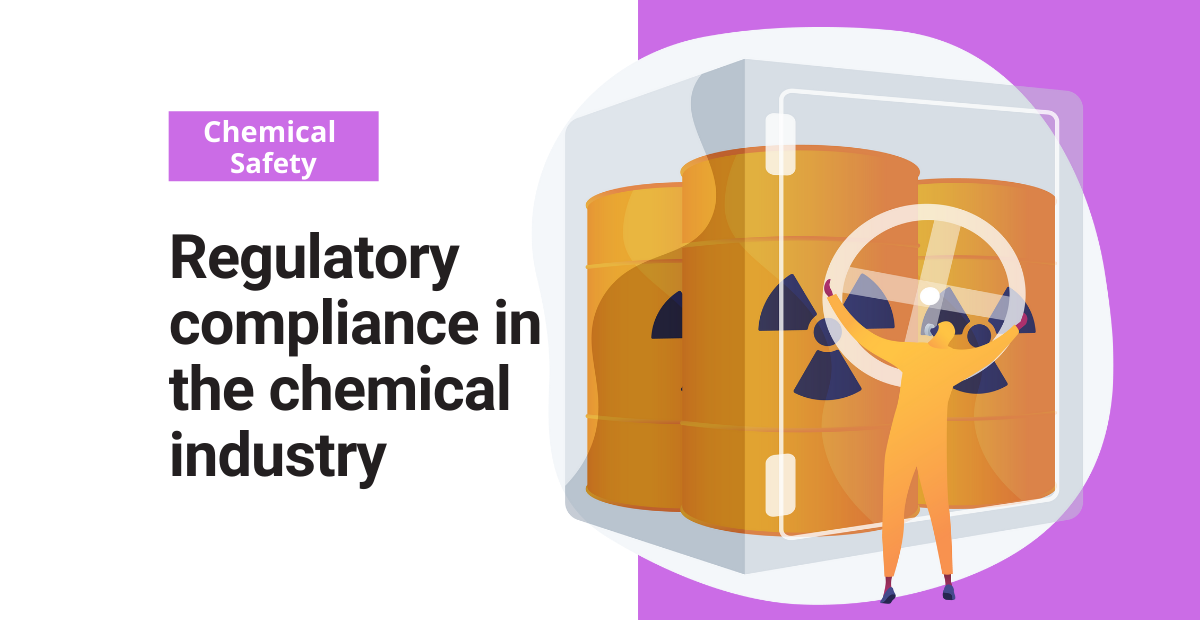It the chemical industry, regulatory compliance is often a challenge. Companies must deal with chemical regulatory compliance across a wide range of products.
But, due to the health risks associated with chemical products, these regulations are very strict. While some cover manufacturing processes, others control transportation and storage. In this post, I’ll cover some of the top chemical regulatory requirements and who oversees them.
Free template!
Download this free new employee onboarding template to standardize your process.
Overview of the TSCA
In the U.S. the EPA administers the Toxic Substance Control Act (TSCA). This legislation regulates new and existing chemicals for public health purposes.
The TSCA focuses on the production, distribution, importation, use, and disposal of specific chemicals. It also provides authority to the EPA to require a pre-manufacture notice (PMN) for new chemicals before manufacturing starts. That’s so there’s an opportunity to review new chemicals before entry into the marketplace.
The EPA can issue significant new use rules (SNURs) when a new use results in exposures or hazardous releases.
The TSCA also requires companies to conduct chemical data reporting (CDR). This allows the EPA to collect basic exposure-related information. Data points here may include the types, quantities, and uses of chemicals produced domestically and imported into the U.S. They collect this information every 4 years from manufacturers of certain chemicals. Typically, this takes place when production volumes are 25,000 lbs. or greater at a single site.
If the EPA determines a new chemical or new use presents a high risk of injury to human health or the environment, the EPA may limit or prohibit the manufacture, processing, or distribution. To address compliance with the TSCA, the chemical company’s operational and environmental health & safety (EHS) departments will need to work closely together, addressing the complexities of chemical regulatory compliance effectively.
OSHA’s hazard communication standard
OSHA’s hazard communication standard (HazCom) has two parts. These create obligations for employers in the chemical industry. The HCS requires employers to inform employees about the chemical hazards present through training. This training is referred to as HAZCOM or hazard communication training.
Companies that produce and distribute chemicals must follow the requirements of the HCS. Moreover, Safety Data Sheets (SDS) and GHS labeling will be key compliance points to consider.
The SDS is a 16-section format that requires information regarding the product. This includes identification, composition, first-aid measures, and fire-fighting measures. Other essential elements are accidental release measures, exposure control, handling and storage, and physical and chemical properties. Furthermore, you should include stability and reactivity, toxicology, ecological information, disposal, transport, regulatory information, and the last revision date.
Chemical companies are required to ensure the SDS data is accurate and up to date. They must provide the buyers with an updated SDS every year the product is purchased. Additionally, chemical manufacturers and distributors are required to provide a label. This label includes a harmonized signal word, pictogram, and hazard statement for the hazard class and category.
Chemical regulatory compliance: EPCRA’s Tier I and II reports
Chemical regulatory compliance means companies must report on hazardous and toxic chemicals at the state and municipal level. This is to help increase the public’s knowledge and access to information regarding chemicals. Information on chemicals at local facilities, their use, and releases into the environment should be included.
This collaborative effort between States, communities, and the chemical company can help to improve chemical safety. It aids in protecting public health and the environment. Tier I reporting requires information on general hazard types and locations of hazardous chemicals present at the facility during the previous calendar year.
Tier II reporting requires specific information on the location and amount of hazardous chemicals present at the facility during the previous calendar year. You must submit these reports by March 1 every year. Send them to the State Emergency Response Commission (SER), the Local Emergency Planning Committee (LEPC), and the local fire department.
Chemical regulatory compliance and management in EHS programs
Some of the biggest challenges facing the chemical industry are related to regulations and the management of chemicals. As regulations change, it’s important to have a department keeping track of these changes. This may be your EHS department or a chemical regulatory compliance committee. Assigning this department the responsibility of submitting reports will streamline the regulatory compliance process.
How do EHS and compliance departments get their data?
Most of the regulations require data regarding chemical inventory or from some point in the business process. This means that you should capture data at all critical points of the supply chain, production, and distribution processes.
By capturing and transferring this data to an Environmental Management System (EMS), you can quickly produce compliance reports. Additionally, you should document all your processes in SOPs. Plus, if you review them frequently, you may be able to avoid compliance issues.
Start by conducting a comprehensive audit to compare business processes to SOPs and any related regulations. This ensures the company is conducting work in accordance with regulations. Manage inventory by compiling information on all chemicals and hazardous substances you have onsite. When you manage your chemical regulatory compliance activities diligently, you’re ensuring both safety and efficiency.
By following these guidelines, you can raise the efficiency of chemical management. Additionally, you provide long-term cost savings, safety, and risk management.




